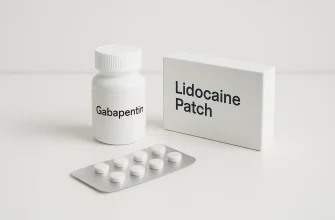Percocet and Percodan are two prescription drugs commonly used to manage moderate to severe pain. Both medications combine an opioid component with a non-opioid pain reliever, but they differ in their specific formulations and applications. Understanding the comparison and differences between these two medications is important for healthcare professionals and patients alike to ensure appropriate and effective pain management.
Below is a comparison chart detailing the key differences and similarities between Percocet and Percodan:
| Factor | Percocet | Percodan |
|---|---|---|
| Active Ingredients | Oxycodone and Acetaminophen | Oxycodone and Aspirin |
| Drug Class | Opioid/Narcotic Analgesic and Non-opioid Analgesic | Opioid/Narcotic Analgesic and Nonsteroidal Anti-inflammatory Drug |
| Indications | Treatment of moderate to severe acute pain | Treatment of moderate to severe pain |
| Release Form | Immediate-release tablets | Immediate-release tablets |
| Strengths | Various combinations of Oxycodone/Acetaminophen, commonly 2.5/325, 5/325, 7.5/325, 10/325 mg | Typically 4.8355/325 mg of Oxycodone/Aspirin |
| Dosage | Usually every 6 hours as needed for pain | Usually every 6 hours as needed for pain |
| Risk of Bleeding | Lower, due to the absence of anti-inflammatory properties | Higher, as aspirin has blood-thinning effects |
| Common Side Effects | Dizziness, drowsiness, constipation, nausea, vomiting | Dizziness, drowsiness, constipation, nausea, vomiting, stomach ulcers or bleeding |
| Potential for Misuse or Dependence | High, due to oxycodone content | High, due to oxycodone content |
| Drug Interactions | Could interact with other medications causing CNS depression, such as sedatives, antidepressants, or alcohol | Similar interactions as Percocet, with the added caution with other medications that affect blood clotting |
| Contraindications | Known hypersensitivity to oxycodone or acetaminophen, respiratory depression, acute or severe bronchial asthma in an unmonitored setting | Known hypersensitivity to oxycodone, aspirin, or other NSAIDs, asthma, uncontrolled respiratory depression, gastrointestinal bleeding or peptic ulcer disease |
| Special Considerations | Risk of severe liver damage with high doses due to acetaminophen content | Risk of gastrointestinal bleeding and ulcers, contraindicated in patients with certain bleeding disorders |
Chemical Composition
Percocet is composed of oxycodone, an opioid pain reliever, and acetaminophen, a non-opioid pain reliever. Percodan, on the other hand, contains oxycodone as well but is combined with aspirin instead of acetaminophen. The table below summarizes their differences:
| Component | Percocet | Percodan |
|---|---|---|
| Opioid | Oxycodone | Oxycodone |
| Non-opioid | Acetaminophen | Aspirin |
Indications and Usage
Both Percocet and Percodan are indicated for the relief of moderate to severe acute pain where the use of an opioid analgesic is appropriate.
Percocet is often prescribed for pain relief after surgery, for injury-related pain, or for conditions like severe arthritis where the pain is significant.
Percodan may also be used for these situations but may be particularly suitable in cases where an anti-inflammatory effect, provided by aspirin, is also desired.
Efficacy
Both medications are effective for pain management. However, the presence of acetaminophen in Percocet not only boosts the pain-relieving effects of oxycodone but also offers fever-reducing properties. Aspirin in Percodan provides anti-inflammatory benefits which can be crucial for conditions that involve inflammation.
Dosage Forms and Strengths
Percocet is available in several dosage forms with varying amounts of oxycodone and acetaminophen. Percodan traditionally comes in a standard dose form containing 4.5 mg of oxycodone hydrochloride, 0.38 mg of oxycodone terephthalate, and 325 mg of aspirin.
Side Effects
Both medications share common opioid-related side effects such as drowsiness, dizziness, constipation, nausea, and vomiting. However, their non-opioid components may cause different additional side effects:
- Acetaminophen in Percocet may cause liver damage if taken in high doses or with alcohol.
- Aspirin in Percodan can increase the risk of bleeding, especially stomach bleeding, and may not be suitable for individuals with certain clotting disorders.
Considerations and Precautions
Percocet:
- Should be avoided by patients with liver disease due to the hepatotoxicity risk from acetaminophen.
- Careful with dosing to avoid acetaminophen toxicity.
Percodan:
- Contraindicated in patients with bleeding disorders or those on certain anticoagulants due to the blood-thinning effect of aspirin.
- Not recommended for individuals with a history of ulcers or gastrointestinal bleeding.
Drug Interactions
Both medications can interact with other drugs:
- Central nervous system depressants can potentiate the sedative effects of oxycodone.
- Alcohol should be avoided due to the increased risk of liver damage with Percocet and the risk of stomach bleeding with Percodan.
Conclusion
When choosing between Percocet and Percodan, healthcare providers must consider factors such as the presence of inflammation, patient history with liver issues or bleeding disorders, and potential drug interactions. Both medications require careful management due to their opioid content and the risks associated with the non-opioid components. Patient education is crucial to minimize the risk of side effects and achieve optimal pain control.









